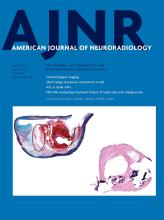Thank you for reviewing our article. To the comments, I respond as follows:
1) The Spinal Instability Neoplastic Score (SINS) was developed to assess the degree of spinal stability. Patients with an SINS of ≥7 should be evaluated for surgical interventions; however, SINS has not been a concerning factor in most published articles1⇓⇓⇓⇓-6 for thermal ablation (often combined with vertebral augmentation) for the management of patients with spinal metastases to achieve pain palliation and/or local tumor control. Surgical procedures were not suitable for patients in the study, and SINS was not included.
2) Microwave ablation (MWA) has better propagation and is more effective than radiofrequency ablation (RFA) in the ablation of high-impedance tissue, especially in osteoblastic lesions.7 Pain palliation could be achieved with MWA for the treatment of osteoblastic metastases, and we also performed MWA. A colleague in our research team collected the data of MWA for the treatment of osteoblastic metastases in our institution and sent those findings to another journal. To avoid duplication of data, osteoblastic metastases were not included in our study.
3) There are RFA probes that can be curved in multiple directions to provide optimal tumor access, particularly in the central posterior vertebral body, where access may be challenging using straight electrodes. The MWA antenna was straight. On those occasions, we inserted the MWA antenna into the center of the lesion by increasing the insertion angle of the bone needle to ensure that the clinical target volume (CTV) was treated. Moreover, MWA has better propagation, which results in deeper penetration.
4) I admit that CTV could result in adequate ablation by a bipedicular approach. When there were large lesions encompassing two-thirds of the vertebral body, 2 needles were inserted into the lesion through bilateral approaches for overlapping ablation zones. In the study, the lesions encompassed two-thirds of the vertebral body in 6 vertebrae.
5) Percutaneous thermal spine tumor ablation poses an inherent risk of injury to the spinal cord and nerve roots because of the proximity of the ablation zone to susceptible neural elements; this injury is the most important potential complication of these procedures.8 Thermoprotection is very important during the procedure. In lesions situated close to neural structures, a 16-ga thermocouple needle was placed in proximity to the neural structure to monitor real-time temperature in the study. Thermoablation was discontinued in cases where the temperature reached above 42°C. We also adopted active thermal protection measures. If the temperature reached a critical level (42°C), perineural and epidural injections of carbon dioxide or 5% cool dextrose solution were implemented. Low power wattage settings along with short and repetitive ablation cycles were implemented to support procedural safety.9
6) We performed vertebroplasty under CT guidance. I agree with you that this approach to cementation is suboptimal because cement flow cannot be monitored in real-time. This approach may have been a contributing factor to the high rate of cement leakage. Several 1-mL syringes were used to extract the cement in its early paste phase; the extract was placed in iced physiologic saline to prolong the solidification time. We injected small amounts of cement each time and repeated CT scanning to observe precise cement distribution and leakage. When cement approximated the canal or foramen (< 0.5 cm), the cement aliquots would be reduced to 0.2–0.5 mL. We scanned the treated vertebrae each time, and the scanning time of the single vertebral body was about 3 seconds. Injection was immediately terminated when CT images showed cement leakage into the spinal canal or intervertebral foramen. Therefore, the 42 patients with cement leakage were all asymptomatic. There are also limitations of CT fluoroscopy, including an inability to obtain precise CT images and an increased radiation dose to the operator compared with CT-guided interventions.10,11
7) I agree that both MWA and RFA have similar success rates and safety profiles for the treatment of spinal metastases (1–6), and direct comparison of total ablation time is inaccurate.
References
- © 2022 by American Journal of Neuroradiology












